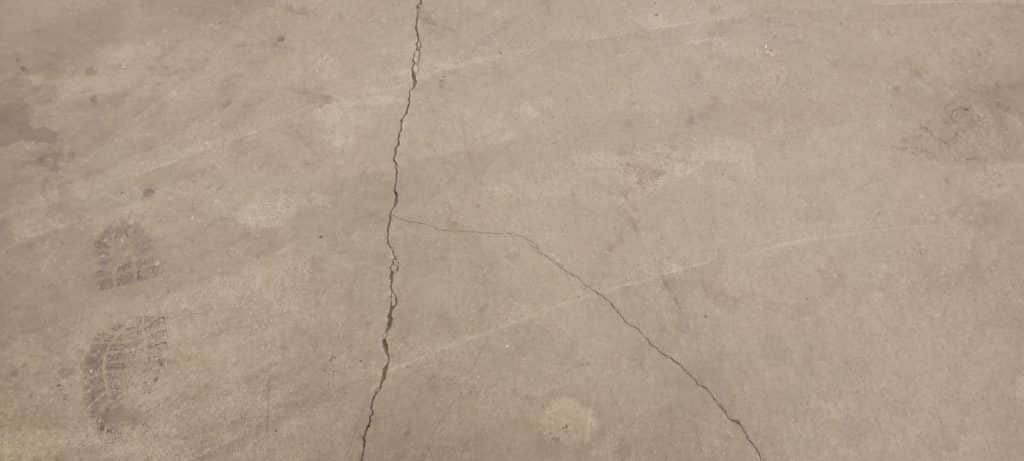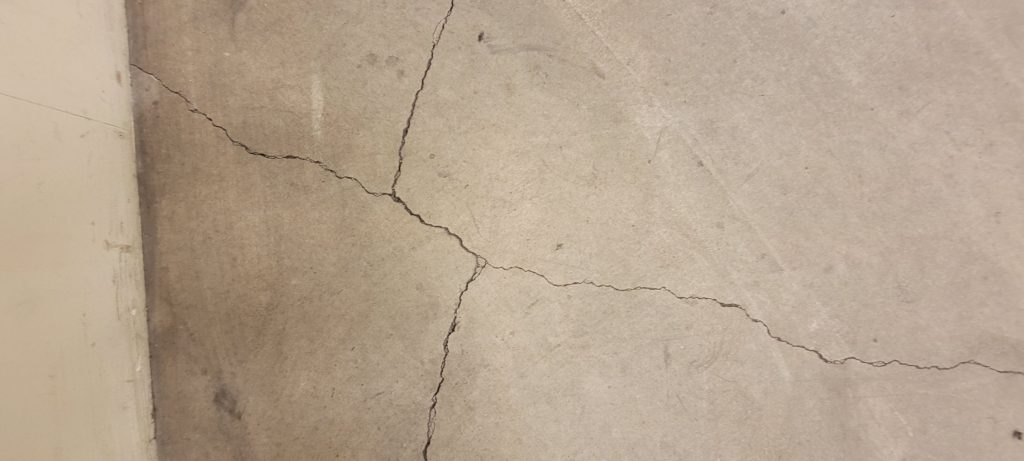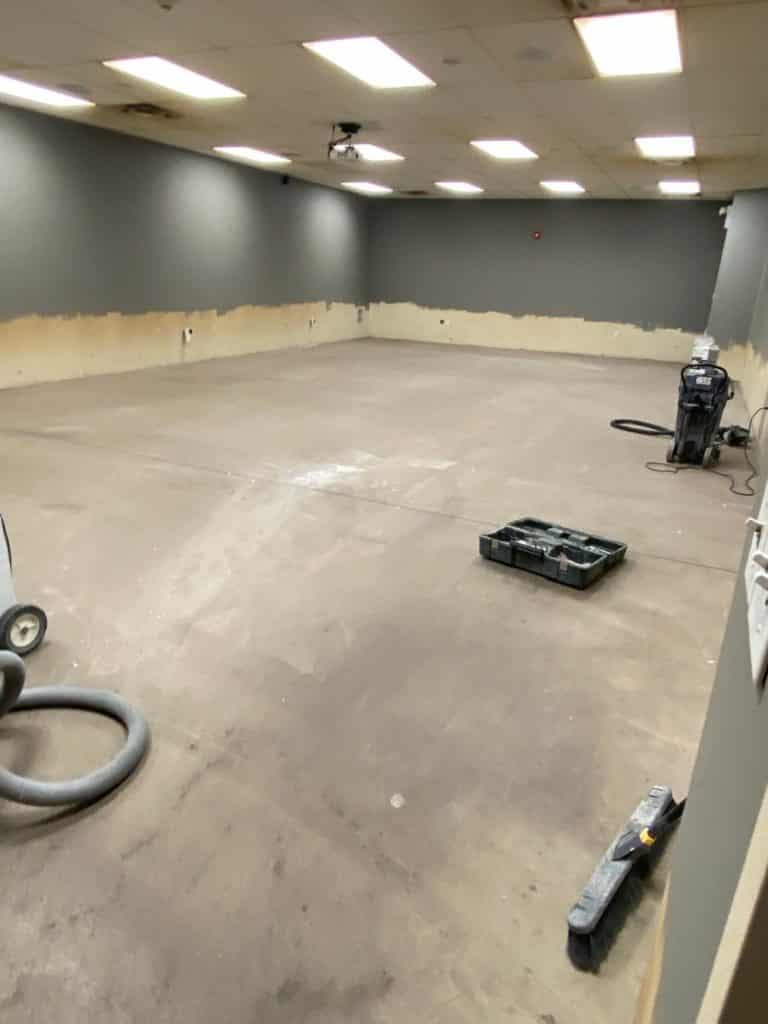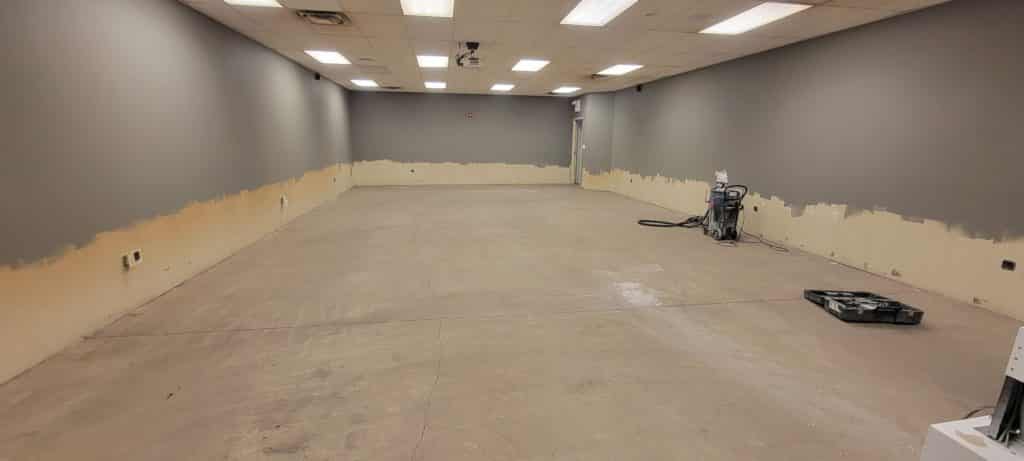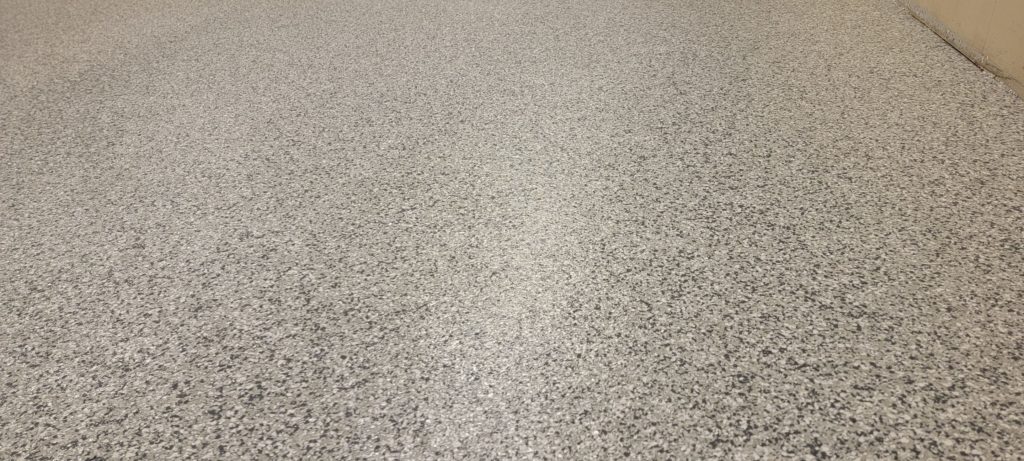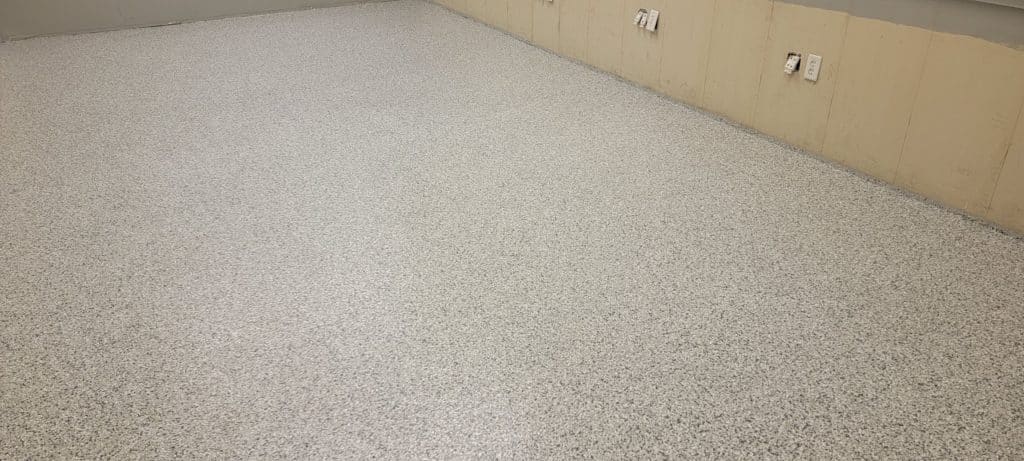If you have an existing epoxy floor, you may be wondering if you can layer a polyaspartic coating over the top of it. Polyaspartic is stronger, more durable, and UV stable, so it makes sense why you would want to layer it over your already strong, durable epoxy floor, to make your floors the best they can be. But can you layer polyaspartic over epoxy, or would you need to remove your epoxy coating in order to lay a polyaspartic one down?
In many cases, you can indeed put polyaspartic over epoxy. There are many considerations involved with this, though. Here is what you need to know about putting polyaspartic over epoxy.

Is Polyaspartic Compatible With Epoxy?
Generally, yes, polyaspartic can be compatible with epoxy. However, in order for your polyaspartic coating to adhere to epoxy properly, the epoxy floor will need to be prepared first. Since your epoxy floor coating has already cured, a chemical bond between your epoxy and your polyaspartic isn’t possible. Thus, you would need to create a mechanical bond.
This typically involves sanding down the top of your epoxy floor coating in order to create a surface that the polyaspartic floor coating will be able to adhere to. Polyaspartic is more durable than epoxy, so if you layer polyaspartic over epoxy, you’re giving yourself a stronger floor.
Many people who wonder if you can put polyaspartic over epoxy do so because they know that their floors need more protection than epoxy provides. However, ripping up your existing floor coating and having a new one installed can be an investment, which leads people to wonder if you can just layer polyaspartic over epoxy, in order to get that extra protection without needing to completely replace their existing floor coating. This is especially true for areas exposed to corrosive materials, such as battery acid in your garage.

Why People Would Want To Put Polyaspartic Over Epoxy
So, polyaspartic is stronger than epoxy, but that additional strength isn’t the only reason why people would want to put polyaspartic over epoxy. Some of the reasons why people would want to do this include:
- Damages. If your epoxy coating has light damage, such as scratching, putting a polyaspartic coating over it can help protect it from being damaged further.
- Application mistakes. If your epoxy coating was a DIY job, you may have made some mistakes during the application process that resulted in color differences, bubbling, lack of adhesion, and more. A polyaspartic coating layered over top can help resolve some such application mistakes.
- Thickening. If your epoxy floors are located somewhere with high levels of impact, such as your garage, you may wish to thicken them with a polyaspartic coating so that they’re more damage-resistant.
Are There Times Where You Shouldn’t Put Polyaspartic Over Epoxy?
While it is possible to put polyaspartic over epoxy, you want to keep the existing state of your epoxy floors in mind. If you want to put down a polyaspartic layer because your epoxy floors are damaged with cracks snaking across them, a polyaspartic top coat is not the solution for you. You would need to replace your existing coating if it is damaged like this, as a polyaspartic coating wouldn’t be able to conceal these damages.
If you’re already going to be replacing your entire floor coating, you may as well opt for a 100% solid polyaspartic floor coating rather than an epoxy coating with polyaspartic layered over top. That way, you could enjoy all the exceptional benefits polyaspartic coatings have to offer to their full extent.
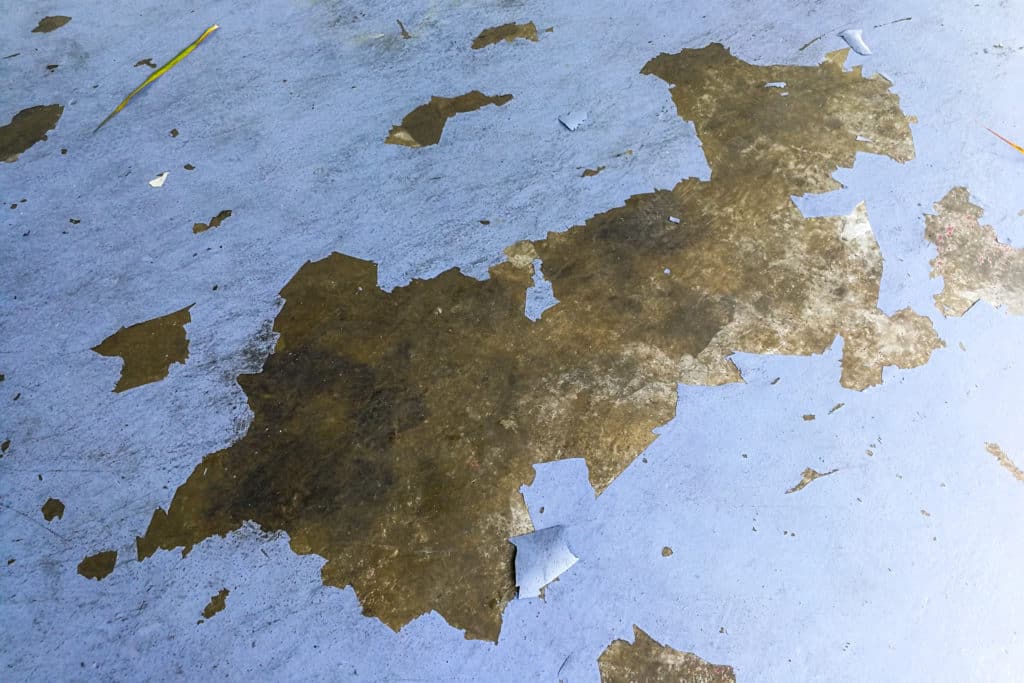
Here is what you need to know the circumstances in which you shouldn’t put polyaspartic over epoxy, but rather, opt for a polyaspartic replacement coating instead.
Damage
As previously mentioned, if your floors are damaged, you shouldn’t put polyaspartic over epoxy coatings. If you tried to do this, you would end up causing more problems. If your epoxy coating is damaged, it will likely need to be removed and you will need to have a new coating installed.
You Want To DIY It
You can DIY epoxy floor coatings because epoxy takes a long time to cure. However, polyaspartic coatings are a professional job. This is because polyaspartic cures very quickly. Without the proper equipment, training, and expertise, you could end up ruining your floors if you tried to DIY a polyaspartic coating.
Do You Need A Floor Coating?
In general, it is better to just have a 100% solid polyaspartic coating laid down, rather than layering polyaspartic over epoxy. Solid Custom Floor Coatings Utah provides high-quality polyaspartic coatings that are engineered to last. If you would like to learn more about our polyaspartic coatings or get a quote for your project, please don’t hesitate to contact us today!


